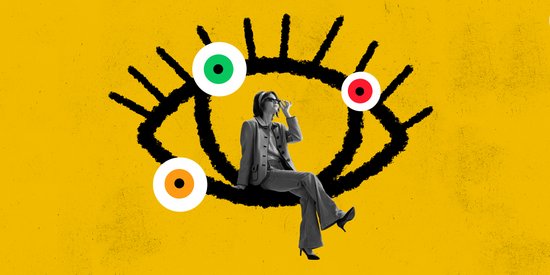Used in coaching, the Enneagram is a tool for self-discovery, a guide to transformation and a means of communication that brings a better understanding of oneself and of others.
The term Enneagram comes from the Greek “ennea” meaning “nine” and from “gramma” meaning “points.” It is thus represented by a star with nine points.
The enneagram corresponds to an esoteric method of personal development, which was developed by Georges Gurdjieff, who saw in the enneagram "the door to acquiring the Philosopher's Stone".
History of the Enneagram
The enneagram first appeared in the teachings of Georges Gurdjieff in 1916.
Its existence was not made public in the broader sense, until the publication of Ouspensky's book, “In Search of the Miraculous” in 1949. It was Ouspensky who first grafted a system of equivalences onto this diagram, using the functions of the human body and the planets. Then, in “The Theory of Eternal Life” and “The Theory of Celestial Influence,” Rodney Collin-Smith, one of his disciples, made the enneagram correspond to the unfolding of human life, which he divided into nine periods and different psychological types, according to an approach quite similar to that adopted by another Ouspensky supporter, Maurice Nicoll, in “Psychological Commentaries on the Teaching of GI Gurdjieff and PD Ouspensky”.
The person who popularized the enneagram was Oscar Ichazo. It was in 1950 that he discovered the work of Ouspensky. He then joined a group ofGurdjieff's disciples and began to gather disciples himself. He also made many trips to Nepal, India and Afghanistan, claiming that he came into contact with the schools that Gurdjieff had attended and that these allowed him to consult the "Akashic records" and he had been chosen just like the Qu tub, the person that was to transmit knowledge to the West.
In October 1969, at the Instituto de Psicologia Applicada in Santiago, Chile, Ichazo gave a series of lectures on the Enneagram as a way to map the human psyche and character. Among the listeners was a certain Claudio Naranjo.
A university teacher in Chile and California, he had attended a Gurdjieff group in his youth in Venezuela and was now participating in the work of the Center for Biochemical Dynamics, where the effects of many psychedelic drugs were tested. Seduced, he spent several months in Arica in the Instituto de Gnosologia that Ichazo had founded there, working there on meditation, psychic experiences, etc. Returning to Berkeley, California, he devoted his time to the study of the Enneagram, making connections with the Seven Deadly Sins of the Christians, with the Zodiac Signs, and with the psychological typology of the “Diagnotic and Statistical Manual of Mental Disorders.” From there was born his own version of the Enneagram. In 1971, he created his school and named it the “Seekers of Truth”.
For his part, Oscar Ichazo undertook to establish his group in the United States during the same year, by publishing advertisements in the mainstream press and in which he promised satori in three months for 3000 dollars.
In California, Naranjo met Kathleen Riordan Speeth, a Doctor of Behavioral Psychology, a member of the Gurdjieff Foundation and whose parents themselves had worked with Gurdjieff. She eventually succeeded Naranjo when the latter decided to return to his homeland.
Among those who studied with Kathleen Speeth, were Robert Ochs and Helen Palmer. who were responsible for bringing the Enneagram into the mainstream.
Robert Ochs was a Jesuit who taught at Loyola University in Chicago. He adapted the enneagram to the Catholic doctrine and then began to teach it as part of the university curriculum. At the same time, along with another member of his order, Father Pat O’Leary, he wrote the first book on this subject. It was again a Jesuit, Richard Riso, who wrote the second book. The enneagram then became so popular in Catholicism in the United States, that in 1989 Ichazo unsuccessfully sued O'Leary and a number of priests and nuns who had written about the enneagram, for violating the copyright laws.
The symbols
Four elements combine in the plot of the type G Enneagram.
The type G enneagram:
It is composed of:
a circle, nine equidistant points, located on this circle and numbered 9 to 1, descending counter clockwise. This representation is called an "ennead."
An equilateral triangle which is inscribed in the circle. Its top is located upwards and coincides with point 9, the other angles correspond to points 3 and 6.
A crossed hexagon inscribed in the circle and joining the 6 other points (1, 2, 4, 5, 7 and 8).
Representation of the Enneagram:
In the family of enneagrams, there are other figures:
The enneagon, a regular and convex polygon.
The enneagram extrapolated from the so-called flaming star, which is drawn in a single gesture.
The enneagram extrapolated from the Seal of Solomon, which is traced in three gestures and made up of three equilateral triangles.
Some see the squaring of the circle in this, with all the symbolism attached to the compass (Time/Sky, spinning top which finds its balance in movement, nomadic tradition; TO BE, the question mark: "I am looking further"; anima …) As well as at the square (Space/Ground, stable pyramid, sedentary tradition; TO HAVE, the exclamation point: "I affirm, I am sure"…)
The type G enneagram is the projection in two dimensions of an ideally spherical and totally cubic "object", a paradox which finds its solution in four dimensions. It is said that it is the “symbol of all life”: by knowing how to read it, it would be possible to know the relation of everything with any other thing; and to control, master or complete any process.
The enneagram synthesizes how the two main laws "of Three" and "of Seven" or "of octave" (concepts of the device of Gurdjieff) combine between them. It is important to conceive it (intellect), to feel it (emotion) and to feel it in movement (body/ guts).
Continue reading… Do you know the 9 personality types according to the enneagram?









